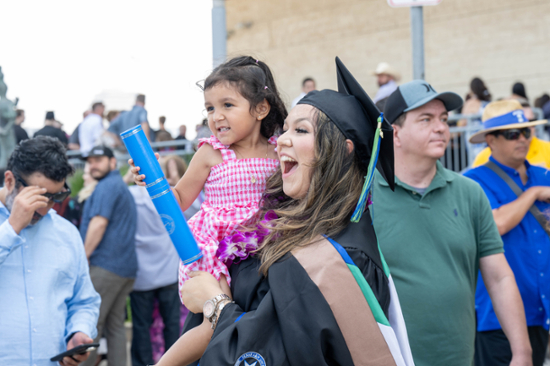HRI Lands $153K Grant for Gulf of Mexico Loop Current System Database Management System
CORPUS CHRISTI, Texas – Understanding the dynamics of The Gulf of Mexico Loop Current System, which is the dominant oceanographic feature in the Gulf of Mexico, would provide a range of benefits for a variety of commercial and sports fishing interests, emergency responders, resource managers, as well as coastal residents who must remain vigilant with regard to storm activity during hurricane season.
The Gulf of Mexico Loop Current System (LCS) is warm water that flows into the Gulf through the Yucatan Channel – between the tip of Southern Mexico and Cuba roughly 130 miles away – and moves north into the Gulf of Mexico, loops east then south before exiting through the Florida Straits, said Dr. James Gibeaut, Endowed Chair for Coastal and Marine Geospatial Sciences at the Harte Research Institute (HRI) for Gulf of Mexico Studies.
Scientists are creating an information system to collect data in private holdings named the Gulf of Mexico Loop Current Data Hub, or GulfHub. That system would support the needs of scientists and researchers by providing access to long time series of quality oceanographic data and high resolution bathymetric, or the measurement of depth, data; it is an ongoing project led by Principal Investigator Felimon Gayanilo, Systems Architect/Enterprise IT Technologist at HRI.
Gibeaut serves as co-principal investigator on the GulfHub project. It is sponsored by the Gulf of Mexico Coastal Ocean Observing System (GCOOS) and the National Academies of Sciences, Engineering, and Medicine, which have provided funding in the amount of $153,469. The project date range is January 2019 to January 2021.
“The Loop Current System affects a lot of processes in the Gulf of Mexico – animal migrations, the paths and strengths of hurricanes, shipping, and oil and gas operations,” Gibeaut said.
For his part, Gayanilo has designed and deployed data portals for much of his extensive career in information systems. He designed and developed the GCOOS data portal, which provides timely data on variable factors such as air pressure and temperature, water temperature, and wind speed, to name a few, from a network of about 1,300 independently monitored sensors. The GCOOS Data Portal, hosted at Texas A&M University-Corpus Christi, was made operational in 2008, three years after the Gulf of Mexico Coastal Ocean Observing System Regional Association was formed.
“The data flows from data providers in the region, and we help them provide data services that would allow us to efficiently pull data from them so that we can consolidate all of that and publish them in a standard format that the other researchers, scientists, and other individuals can use,” Gayanilo said. “It is an open data portal, so this information is available to the public for free and without limitation on its use.”
GCOOS is one of 11 regional centers in the U.S. Integrated Ocean Observing System and is a Regional Information Coordinating Entity-certified data center, which is a certification process provided by the National Oceanic and Atmospheric Administration (NOAA).
“We follow the NOAA guidelines in doing data quality control,” Gayanilo said. “It is like getting your data directly from a NOAA facility.”
The GulfHub project has its roots in a 2017 study conducted by the National Academies of Sciences, Engineering, and Medicine, which published its recommendations in a report called “Understanding and Predicting the Gulf Loop Current” the following year. One such recommendation was to consolidate data related to the study and analysis of the Gulf of Mexico Loop Current.
Gayanilo notes that industry players are participating in the data management project.
“For the very first time, the industry is releasing its data to the general public for this loop current study -- which probably amounts to about $20 million worth of data – and they’re willing to share it with the wider community,” Gayanilo said.
The overall goal of the project is to develop models and to forecast loop movement in the Gulf.
“This is important for industry because it delves into the arena of safety,” Gayanilo said. “You want to know if you have a strong current approaching so you can make the proper decision for safety purposes.”
While the project’s range extends from Texas to Florida in the U.S., it will provide benefits from which Corpus Christi residents can benefit, according to Gibeaut.
“Understanding the loop current better will help Corpus Christi and the Coastal Bend with better knowledge about what is impacting the fishing industry and what may impact the oil and gas industry offshore with their platform operations,” he said. “The project will help us better understand harmful algal blooms, or ‘red tide.’ In addition, we’ll get better predictions for hurricanes if we better understand and map the loop current.”

